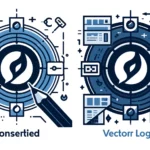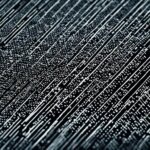Table of Contents
In the world of digital photography and online graphics, the JPEG image format plays a significant role. Whether you are capturing memories with your smartphone, editing images on your computer, or sharing visuals on the internet, chances are you’ve encountered JPEG files. But what exactly is the JPEG image format and how does it impact the digital visual experience? Let’s delve into the details and unravel the mysteries of this widely used image format.
A JPEG file, short for Joint Photographic Experts Group, is a type of raster image file format commonly used to store images. One of the key features of JPEG files is their ability to compress image data, resulting in smaller file sizes compared to other formats.
When it comes to reducing file size, JPEG compression employs a technique that involves changing color values and grouping pixels with similar colors together. This clever approach allows for significant file size reduction while maintaining a reasonable level of image quality.
It’s important to note that older iPhones typically store photos as JPEG files, while newer models default to the HEIC format. However, JPEG remains a widely supported and compatible format across various devices and software.
Furthermore, JPEG files often contain additional information in the form of EXIF data. This data includes details about the image, such as the date and time of creation, camera settings, thumbnail, copyright information, and even geotags. This extra information can be accessed on Windows computers by right-clicking on the photo and selecting Properties, then Details. On a Mac, open the image in Photos and choose Get Info.
Now that we have a grasp on what the JPEG image format is, let’s explore how its compression works in the next section.
How does JPEG Compression Work?
When it comes to digital images, JPEG compression plays a vital role in reducing file size while maintaining acceptable image quality. Let’s explore how this compression technique works and its impact on image files.
JPEG compression operates by dividing an image into small squares, known as “blocks,” and compressing each block individually. Each block is then further divided into smaller units called “pixels.” This division allows for more efficient compression, resulting in smaller file sizes.
By using JPEG compression, images can be optimized for web use, where smaller file sizes are essential for faster loading times. However, it’s essential to note that this compression process is not without its drawbacks.
One potential drawback of JPEG compression is the presence of artifacts, visible blocks, or lines that may appear in the image. These artifacts are more noticeable in images with sharp edges or large areas of uniform color.
Despite this, most people do not perceive a significant loss in image quality when JPEG compression is applied. The compression algorithm is designed to achieve a balance between file size reduction and maintaining an acceptable level of image quality.
However, it is important to consider that JPEGs may not be the optimal choice for images that require extensive editing. Excessive compression can result in a reduction in image quality, making it difficult to make precise adjustments without noticeable degradation.
In summary, JPEG compression splits an image into small squares, compresses them individually, and reduces the overall file size while maintaining an acceptable level of image quality. It is a widely-used compression technique that allows for efficient web use. However, it is essential to strike a balance between compression and maintaining adequate image quality, especially when extensive editing is required.
Benefits and Downsides of JPEG Files
When it comes to image formats, the JPEG file format has gained widespread popularity, mainly because of its smaller file size. Thanks to compression techniques, JPEG files are significantly smaller compared to other formats, making them ideal for web use. The smaller file size allows for faster website loading times and consumes less storage space on your devices.
However, it’s important to note that the reduced file size of JPEGs comes with a slight trade-off in image quality. Compared to uncompressed or lossless formats, JPEGs may exhibit a slight degradation in image quality, especially with highly detailed images containing sharp edges or large areas of uniform color. Despite this, for most everyday purposes, the loss in image quality is not noticeable to the average viewer.
One of the key advantages of JPEGs is their wide support across various web browsers and devices. Whether you’re viewing images on your computer, smartphone, or tablet, chances are JPEGs will be displayed flawlessly. Additionally, JPEG files can be easily converted to other popular formats like PNG or GIF, providing more flexibility in managing your images.
While JPEGs offer several benefits, it’s essential to consider their downsides as well. Due to the compression techniques used, JPEGs may introduce artifacts, resulting in visible blocks or lines on the image. This can occur when the compression level is too high. Furthermore, editing JPEGs can be challenging without causing additional quality loss, making them less ideal for professional image editing or printing purposes. Additionally, JPEGs do not support transparency, which can be a limitation for certain design requirements.
FAQ
What is a JPEG file?
A JPEG file is a type of raster image file format used to store images.
How does JPEG compression work?
JPEG compression reduces file size by changing color values and blocking together groups of pixels with a more uniform color. It splits an image into small squares and compresses each square individually.
What is the difference between older and newer iPhones regarding JPEG files?
Older iPhones store photos as JPEG files, while newer models default to HEIC format.
What information does EXIF data provide in a JPEG file?
EXIF data contained within a JPEG file provides extra information such as date and time of creation, camera settings, thumbnail, copyright information, and geotags.
How can I view EXIF data in a JPEG file on Windows?
On Windows, you can view EXIF data by right-clicking on the photo and selecting Properties, then Details.
How can I view EXIF data in a JPEG file on a Mac?
On a Mac, you can open the image in Photos and choose Get Info to view EXIF data.
What are the advantages of using JPEG files?
JPEG files have smaller file sizes, making them ideal for web use. They are widely supported by web browsers and can be displayed on various devices. Additionally, they can be easily converted to other file formats like PNG or GIF.
Are there any downsides to using JPEG files?
Downsides of JPEG files include the potential for artifacts, difficulty in editing without quality loss, and challenges with transparent images.













